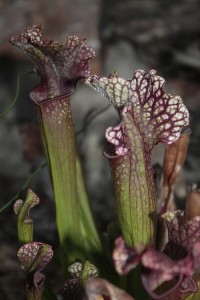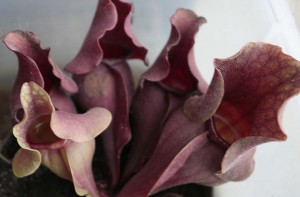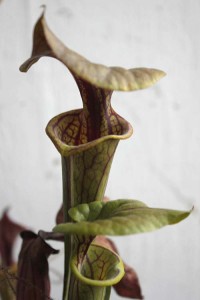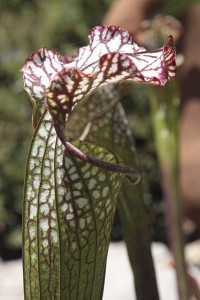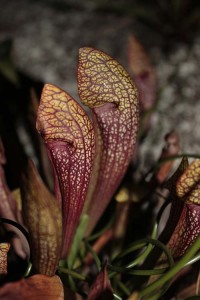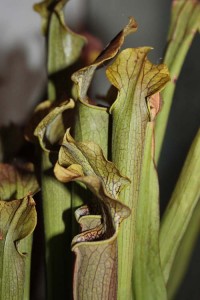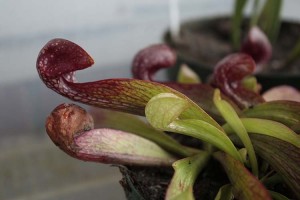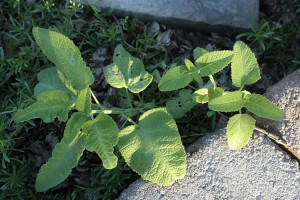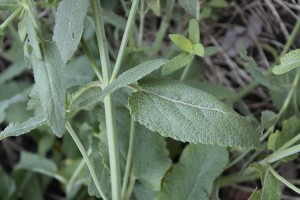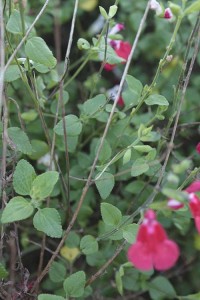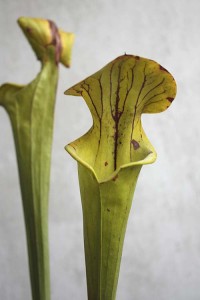There are over a quarter million plant species known to biology. Of those more than 5,000 can be found in California, and 1,500 in San Diego County alone. With so many amazing plant species out there I still find myself being interesting in hybrids between the pure species.
My last post was on Sarracenia, the North American pitcher plants. The genus appears to be fairly new to the world in evolutionary terms, and all the species in the genus will hybridize easily with any of the others. And all these hybrids will continue to interbreed with the parent species or other hybrids. When you find a bog with two or more species in it, chances are good that you’ll find intermediate plants with traits of all the species present in that location.
This drives biologists crazy. Finding a plant that’s a pure species can be a major headache when the plants are out there, frolicking in the mud. But evolutionary biology acknowledges that hybrids can introduce new genes into a plant’s gene pool so that they might be better equipped to withstand some stressors that a pure species might not.
In addition to possible evolutionary advantages, a hybrid plant found in nature can be a really cool-looking mongrel. And human-created hybrids that have been selected for specific traits over generations can begin to take a species or genus in directions nature would never have imagined.
Here on the left is the Sarracenia hybrid Judith Hindle. I first encountered mass tissue-cultured numbers of it in the flower aisle at Trader Joe’s a couple years ago. It’s a pretty great-looking plant by itself, but imagine a whole store display of it. This human created selection derives from three species, and its pedigree can be notated: ((Sarracenia purpurea x S. flava) x S. leucophylla) x ((S. purpurea x S. flava) x S. leucophylla).
Doing the math, you an see that it’s one-fourth S. purpurea, this species. (My photo here isn’t the exact parent, just one general example of what this variable species can look like. Several taxonomists have decided that this plant I’ve shown you, S. purpurea var. burkii, is actually a new species, S. rosea, but it looks quite similar and you can get the general idea…)
Another quarter of the ancestry comes from S. flava. (You might recognize this same photo from my last post. Once again this is just a rough estimation of what the parent looked like. It’s actual great-grandparents were S. flava var. rugelli, a plant with pure green pitchers with a red patch in the throat.)
And the final two quarters of its ancestry comes from the gorgeous S. leucophylla, the white-topped pitcher plant. I find myself comparing the hybrid with the parents, trying to see the characteristics that came through in the final hybrid. Clearly S. leucophylla has the most influence in this cross.
Here’s another common sarracenia, S. Dixie Lace. Larry Mellichamp, its breeder, isn’t 100% certain of its parentage, but he estimates it to be: (S. leucophylla x S. rubra) x (S. psittacina x S. purpurea). It shares two parents with Judith Hindle above, but introduces two new species into the mix.
The presence of this ancestor, S. rubra, is subtle, and is probably most manifested in the somewhat upright-growing pitchers and the robust growth habit. (Once again, the plant I’ve shown is only a close approximation of the S. rubra var. wherryi that was used for the actual cross. And yet again, this latter species has been classified as a separate species by some taxonomists.)
The final ancestor is S. psittacina, a plant that’s practically impossible to hide the presence of in any hybrid. The leaning growth habit and patterning of the pitchers takes several generations to fade into the background.
Hybrids can happen anywhere. In the irrigated part of my garden I have a few sage species from Europe and the Americas. These are the leaves of Salvia sagittata, the arrow-leaved sage, a plant from Ecuador.
Next to it I noticed a young plant which at first I thought was a seedling of the of its neighbor. It has the same light green coloration and coarse leaf texture as does S. sagittata. When I started looking closer at the leaves, however, something seemed a little off. Instead of the distinct arrow shape, the leaves are closer to oval. Seedlings sometimes take a while to develop their mature characteristics, but I started thinking that it might be a hybrid of S. sagittata with one of the other sages nearby.
Three feet away is S. nemorosa. It also has coarse-textured leaves, but they’re smaller, darker green and rounder (probably “linear” to “oblong” with a “cordate” leaf base, according to the leaf morphology charts).
And about six feet away are several plants of the popular ‘Hot Lips’ cultivar of S. microphylla, a species from Texas into Mexico. Its leaves are smooth, much smaller, darker green and also more rounded. (I guess I’d call it an “ovate” leaf form with an “obtuse” leaf tip.)
Who do you think might be the father? I’m leaning towards S. nemorosa.
The seedling sage found a clearing in the middle of a little walkway to germinate. I’ll let the seedling bloom to see if it’s interesting–or if it’s even a hybrid at all. Seeing the flowers should help me better guess what its parents might be. If it’s worth keeping I’ll transplant it out of harm’s way. If it’s not, I’ll treat it as any other unwanted garden colonizer. Whatever the case, it’ll be an interesting little experiment.
Topic for a future post: What’s bad about hybrids?

